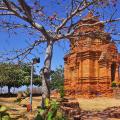Latin America on the world map is a collection of countries located in territories that were previously dependent on the European metropolises. These countries occupy part of South and North America, as well as the isthmus between them. Latin America is an amazing land mysterious civilizations such as the Aztecs and Mayans, as well as brave caballeros, sultry beauties, unique traditions and cultures. The group of Romance languages (Spanish, Portuguese and French) is used as the official languages of Latin American countries.
Countries and capitals of Latin America
Below are the countries and capitals of Latin America, as well as their brief description.
- Antigua and Barbuda is a small Caribbean state. The population of the country is over 86.6 thousand inhabitants. The official language is English. The capital is the city of St. John's.
- Argentina is the second largest country in Latin America. Its population is over 42.6 million inhabitants. The official language of Argentina is Spanish. The capital is the city of Buenos Aires.
- Belize is a state located in the Caribbean. The population of the country is 308 thousand inhabitants. The official language is English. The capital is Belmopan.
- Bolivia is a state located in the center of South America. Its population is about 10.5 million inhabitants. The official languages are Spanish and Quechua. The capital is the city of Sucre.
- Brazil is the largest state in Latin America. It occupies the territory of the central and eastern part of South America. Population - 201 million inhabitants. The official language is Portuguese. The capital is.
- Venezuela is a country located in the north of South America. Its population is over 28.4 million inhabitants. The official language is Spanish. The capital is a city.
- Haiti is one of the poorest Latin American countries, constantly suffering from natural disasters and coups. Population - about 9.9 million inhabitants. The official languages of Haiti are French, Creole, etc. The capital is the city of Port-au-Prince.
- Guatemala is a state located in the central part of the continent of America. Population - about 14.4 million inhabitants. Most of the inhabitants are mestizos and Indians. The official language is Spanish. The capital is the city of Guatemala.
- Honduras is a state located in the central part of the continent of America. It is also washed by the Caribbean Sea. Population - over 8.4 million inhabitants. The official language is Spanish. The capital is the city of Tegucigalpa.
- The Dominican Republic is a country located in the east of the picturesque island of Haiti. Population - approximately 9.7 million inhabitants. The official language of the Dominican Republic is Spanish. The capital is a city.
- Colombia is a state located in South America... Population - over 45.7 million inhabitants. The official language is Spanish. The capital is a city.
- Costa Rica is a small state located in the center of the continent of America. Its population is over 4.2 million inhabitants. The official language is Spanish. The capital is the city of San Jose.
- Cuba - Island state located in the Caribbean. Its unofficial name is Liberty Island. Population - just over 1 million inhabitants. The official language of Cuba is Spanish. The capital is.
- Mexico - a state located in the south North America... Its population is 116.2 million inhabitants. The official language is Spanish. The capital is.
- - a state located in the central part of the continent of America. Population - over 6 million inhabitants. The official language of Nicaragua is Spanish. The capital is Managua.
- Panama is a state located on the Isthmus of Panama. Its population is about 3.7 million inhabitants. Panama's official language is Spanish. The capital is Panama.
- Paraguay is a state in the center of South America. Its population is over 6.3 million inhabitants. The official languages of Paraguay are Spanish and Guarani. The capital is Asuncion.
- Peru is a state of South America located in its northwestern part. Its population is about 30.5 million inhabitants. The official languages of Peru are Spanish, and in some regions - Aymara, Quechua, etc. The capital is Lima.
- El Salvador is a state located in the center of the continent of America. Its population is 6.9 million inhabitants. The official language of El Salvador is Spanish. The capital is San Salvador.
- Uruguay is a state in the southeastern part of South America. Its population is over 3.3 million inhabitants. The official language is Spanish. The capital is Montevideo.
- Chile is a state located in the southwest of South America. Its population is over 17.2 million inhabitants. The official language of Chile is Spanish. The capital is Santiago.
- Ecuador is a state located in South America. Its population is over 15.4 million inhabitants. The official language of Ecuador is Spanish. The capital is Quito.
In addition, the following territories are part of Latin America: Puerto Rico (territory of the United States) and territories - French Guiana, Martinique, Guadeloupe, San Martin and San Barthelemy.

Latin America landmarks
Latin America is incredibly rich in interesting places... 3 of the 7 new wonders of the world are located here. All the sights of Latin America can be divided into natural and man-made objects, as well as cities and villages of ancient civilizations.
Natural attractions
- Ojos del Salado is the most high volcano Land (6887 m).
- The Atacama Desert is the driest place on the planet, located in the west of South America.
- Andes - the longest mountain system the world (9000 km).
- Angel is the highest waterfall in the world (979 m).
- The Amazon is the longest and most picturesque river on the planet (6437 km).
- в - the largest South American island, with an area of 47,992 sq. km. It is a virgin land renowned for its wildlife, beautiful landscapes and harsh climates.
- Iguazu Falls, located on the border of Argentina and. They represent one of the most beautiful natural wonders on our planet.
Man-made sights
- The Maracanã Stadium in Brazil is one of the largest stadiums in the world, capable of accommodating up to 103 thousand fans.
- The statue of Christ the Redeemer is one of the 7 new wonders of the world. The statue is located on the Corcovado mountain in Rio.
- Geoglyphs of the Nazco plateau are a group of amazing images, lines and geometric shapes created by an unknown civilization.
- Moai - stone idols of Easter Island.
Towns and villages of ancient civilizations
- Cuzco (Peru) is the ancient capital of the Inca Empire and one of the oldest South American cities. The name of the city from Quechua is translated as “the center of the world”.
- Machu Picchu (Peru) is one of the 7 new wonders of the world, known as the "city in the sky" or " lost city Incas ".
- Teotihuacan (Mexico) - the famous "ghost town", which is the oldest locality Western Hemisphere.
- Umshal (Mexico) - the ancient center of the Mayan civilization, located on the Yucatan Peninsula. (83.6 cm), Brazil (1.11 m), Venezuela (80 cm), Guatemala (83.58 cm), Honduras (83.5 cm), Colombia (20 cm), Costa Rica (83.6 cm), Mexico (83.8 cm), (80 cm), Paraguay (86.7 cm), El Salvador (83.5 cm), Uruguay (85.9 cm), Chile (83.5 cm), (84 cm), Cuba (84.8 cm) and Argentina (86.7 cm).
- Legua is a unit of length used in Guatemala (1 unit = 5.573 km), Honduras (4.2 km), Colombia (5 km), Cuba (4.24 km), Ecuador (5 km), Paraguay (4 , 33 km), Peru (5.6 km), Uruguay (5.154 km), Chile (4.514 km), Brazil (6.66 km), Mexico (4.19 km) and Argentina (5.2 km).
Initially, Indian tribes and peoples lived on the territory of Latin America.
By the time of the discovery of America at the end of the 15th-16th centuries. most of the Indian tribes were at various stages of the primitive communal system, was engaged in hunting, fishing and gathering.
At the same time, the ancient civilizations of the Maya, Aztecs and Incas reached a high level.
The conquest of America by the Spaniards and the Portuguese was largely completed in the 16th-17th centuries. and accompanied in many cases by the universal extermination of the indigenous inhabitants of America.
Spain and Portugal spread their languages and the Catholic religion among the surviving aborigines. They were much less influenced by the English, French and Dutch colonization.
V early XIX centuries on the map of Latin America, wars and liberation movements for the independence of the Spanish colonies in America began, as a result of which independent states almost everything became.
The independence of Portuguese-speaking Brazil was also proclaimed.
Geography
Geographically, Latin America starts from the Rio Bravo del Norte River near the US-Mexican border and ends at Cape Horn - the most southern point South America.
In terms of relief, Latin America is divided into the mountainous Andes region stretching along the Pacific coast and a flat region with plateaus (Brazilian and Guiana) and lowlands (Amazonian, Orinoco, La Platka).
Country
It includes part of North America and most of Central and South; not always, but the islands of the Caribbean are also included in Latin America.
The name "Latin America" is due to the fact that its main languages are Spanish and Portuguese. belong to the Romance languages derived from Latin.
Sometimes the terms South America and the more politically correct Indian America are also used.
Continental Latin America includes the Spanish-speaking countries of mainland America:
- Argentina,
- Bolivia,
- Mexico,
- Guatemala,
- Nicaragua,
- Panama,
- Venezuela,
- Colombia,
- Honduras,
- Paraguay,
- Uruguay,
- Salvador,
- Costa Rica,
- Peru,
- Ecuador,
and Portuguese-speaking Brazil as well as French-speaking French Guiana.
The insular part is made up of the Dominican Republic, Cuba, Haiti, Puerto Rico, Guadeloupe and Haiti.
The most high point is Mount Aconcagua - 6960 m in Argentina, and the lowest is the Valdes Peninsula - 40 m in the same country.
Climate
Most of Latin America is in equatorial latitudes where humid air from the oceans constantly enters, causing a rainy climate.
Record rainy is the area near the western slopes of the Andes.
Paradoxically, not far from the wettest place on Earth, the driest is also located - the Atacama Desert, where it does not rain for years.
The mainland is located in the equatorial, tropical, subtropical and temperate climatic zones.
Most of Latin America has a hot climate with an average daily temperature of over 20 degrees.
The bowels are rich in oil, natural gas, rare and ferrous metals.
Of natural disasters, earthquakes and volcanic eruptions are not uncommon here. 
The fauna resembles Africa and Australia. Endemic representatives of the fauna are American ostriches, sloths, guanaco llamas.
Latin America - main manufacturer coffee and tobacco; is the birthplace of the potato.
Very impressive flora: in forests covering almost half of Latin America the famous red, sandalwood, rubber and chocolate trees grow.
The crowns of trees in the jungle are arranged in several tiers, sometimes reaching a height of 100 m.
sights
Latin America is a real paradise for tourists.
It is here that you can find:
- the longest mountains on Earth - the Andes,
- the largest active volcano- Cotopaxi (in Ecuador),
- the highest Angel Falls (in Venezuela),
- the biggest high Mountain Lake Titicaca (in Peru and Bolivia)
- the most long river- Amazon (mainly in Brazil).
It should be noted that the tourism industry is focused on people with an upper-middle income (70% of tourists visiting the Latin American region reserve places in five-star hotels), many have seen in their tourist century. 
Most of the tourists here prefer the active cognitive rest and are not disappointed in their expectations. What attracts them to the countries of Latin America?
Below we list the most famous sights of almost all these countries, almost without mentioning the must-visit cities of their capitals.
Brazil
The unique 275 Iguazu Falls and the majestic statue of Christ the Savior, famous carnival and sandy beaches Copacabana, the world's largest stadium "Maracana" and exotic bird park, rest in the hacienda Pantanal Bonito and the water park Fortaleza. 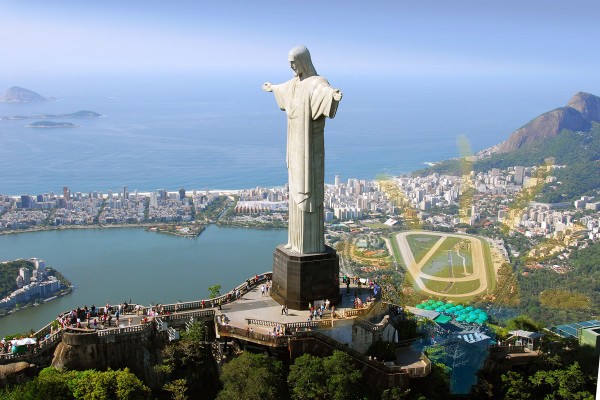
Argentina
Inchugualasto (Moon Valley) National Parks with ancient rock paintings and a mysterious bowling ball and Fitzroy, Nahuel Huapi and Traful lakes, Talampaya valley with red-brown rocks and the Puente de la Mujer (Bridge of the Woman) in Buenos Aires. 
Mexico
Mysterious Mayan buildings in Chichen Itza and diving on the coral reefs of Isla Mujeres, the Yucatan Peninsula with underground lakes and Oaxaca Architectural Reserve, the Sumidero River Canyon in Chiapas and Horstail Falls, the Cabo San Lucas Arch and the sandy beaches of Puerto Vallarta.
Peru
Mysterious multi-kilometer lines of the Nazca desert and witnesses of the Inca history of the area of Cusco and Machu Picchu; the Pachacamac archaeological reserve and the drawing of a giant candelabrum near the Gulf of Pesco, the sacred valley of the Incas Urubamba and the Maras salt mines. 
Chile
Phenomenal stone sculptures of Easter Island and the Lake District, cool ski resorts and the driest Atacama desert, nature reserve Patagonia and the island of Robinson Crusoe.
Costa Rica
Impressive nature reserves and beaches with unusual black sand, the sacred Basilica of Los Angeles in Cartago with the statue of the Black Madonna, Arenal volcano and thermal springs Tabakon.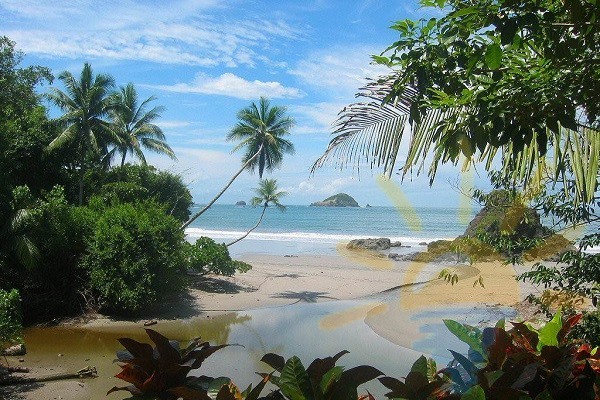
Colombia
An architectural monument of Cartagena included in the List World heritage UNESCO, and the Cathedral of Las Lajas, Guatape rock and Caño Cristales River.
Bolivia
Arkoiris waterfall and salt marshes Uyuni, Laguna Colorada and the thermal springs of Sol de Manana.

Venezuela
Pearls national park Kanaima - Angel Falls and Roraima Rock, the cities of Merida and Ciudad Bolivar. 
Uruguay
Punta del Este resort and the city of Takuarembi statues, the colonial cities of Colonia del Sacramento and Colonia Suiza.
Guatemala
The majestic archaeological site of Tikal Mayan civilization and Lake Atitlan, volcano santa maria and the Semuk Champi natural reserve with many mini waterfalls. 
Nicaragua
The ruins of the city of Leon Viejo are a UNESCO World Heritage Site and Lake Lago de Nicaragua. 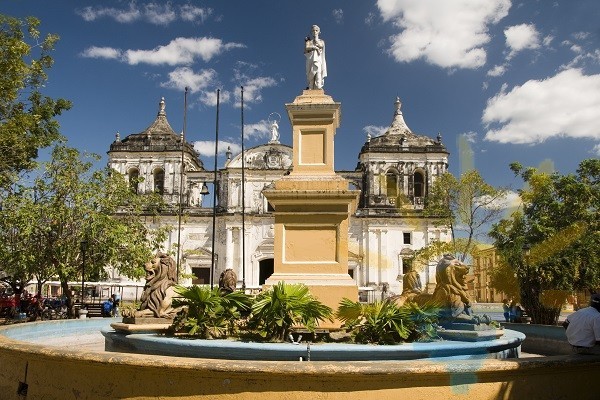
Cuba
The famous resort of Varadero and the Cuevas de Bayamar cave. 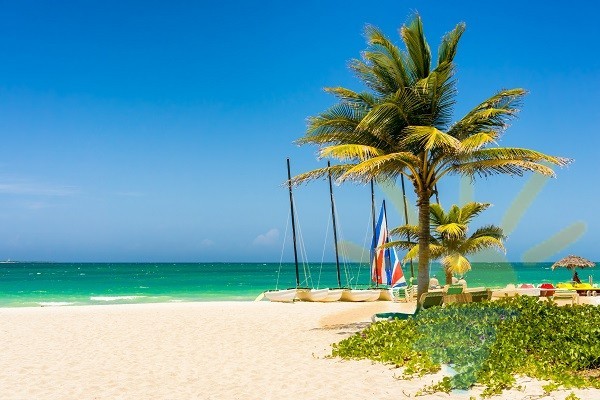
Dominican Republic
Saona Island and the medieval town of Altos de Chavon near La Romana Fort San Felipe and amber museum in Puerto Plata.
Ecuador
Volcano Cotopaxi and Volcanoes Road, Galapagos Islands and the colonial city of Cuenca. 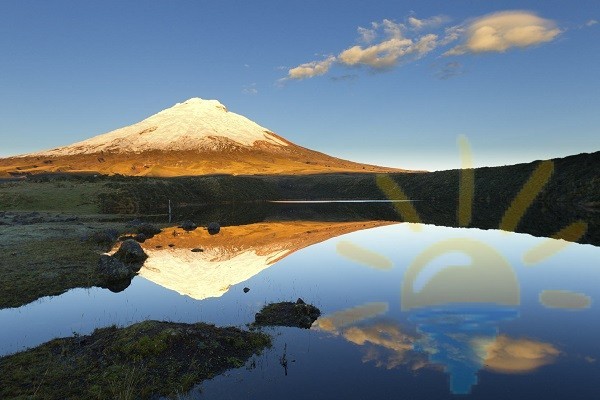
Honduras

Rio Platano Biosphere Reserve and diving in Utila, rafting and kayaking in Rio Cangrejal.
Salvador
Archaeological Park Hoya de Seren ( cultural heritage UNESCO) and Tatsumal Archaeological Museum.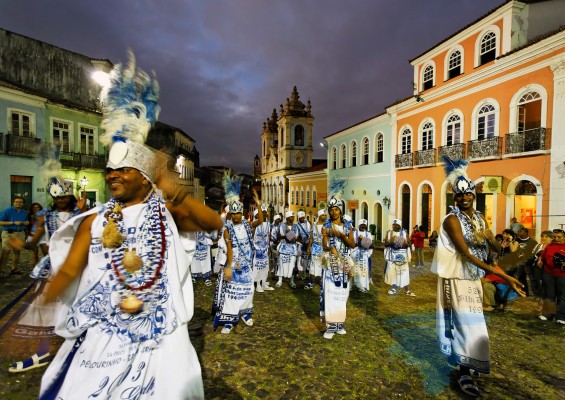
Havana video trip Cuba
Did you like the article?
Subscribe to site updates via RSS, or stay tuned
Latin America on the world map is a collection of countries located in territories that were previously dependent on the European metropolises. These countries occupy part of South and North America, as well as the isthmus between them. Latin America is an amazing land of mysterious civilizations such as the Aztecs and Mayans, as well as brave caballeros, sultry beauties, unique traditions and cultures. The group of Romance languages (Spanish, Portuguese and French) is used as the official languages of Latin American countries.
Countries and capitals of Latin America
Below are the countries and capitals of Latin America, as well as their brief description.
Antigua and Barbuda- a small state of the Caribbean. The population of the country is over 86.6 thousand inhabitants. The official language of Antigua and Barbuda is English. The capital is the city of St. John's.
Argentina- the second largest state in Latin America. Its population is over 42.6 million inhabitants. The official language of Argentina is Spanish. The capital is the city of Buenos Aires.
Belize- a state located in the Caribbean. The population of the country is 308 thousand inhabitants. The official language of Belize is English and the capital is Belmopan.
Bolivia- a state located in the center of South America. Its population is about 10.5 million inhabitants. Bolivia's official languages are Spanish and Quechua. The capital is the city of Sucre.
Brazil- the largest state in Latin America. It occupies the territory of the central and eastern part of South America. Population - 201 million inhabitants. The official language of Brazil is Portuguese. The capital is Brasilia.
Venezuela- a country located in the north of South America. Its population is over 28.4 million inhabitants. The official language of Venezuela is Spanish. The capital is the city of Caracas.
Haiti- one of the poorest Latin American countries, constantly suffering from natural disasters, hunger and coups. Population - about 9.9 million inhabitants. The official languages of Haiti are French, Creole and Haitian. The capital is the city of Port-au-Prince.
Guatemala- a state located in the central part of the continent of America. Population - about 14.4 million inhabitants. Most of the inhabitants are mestizos and Indians. The official language of Guatemala is Spanish. The capital is the city of Guatemala.
Honduras- a state located in the central part of the continent of America. It is washed By the Pacific Ocean and the Caribbean. Population - over 8.4 million inhabitants. The official language of Honduras is Spanish. The capital is the city of Tegucigalpa.
Dominican Republic Is a country located in the east of the picturesque island of Haiti. Population - approximately 9.7 million inhabitants. The official language of the Dominican Republic is Spanish. The capital is the city of Santo Domingo.
Colombia- a state located in South America. Population - over 45.7 million inhabitants. The official language of Colombia is Spanish. The capital is the city of Bogota.
Costa Rica- a small state located in the center of the continent of America. Its population is over 4.2 million inhabitants. The official language of Costa Rica is Spanish. The capital is the city of San Jose.
Cuba- an island state located in the Caribbean. Its unofficial name is Liberty Island. Population - just over 1 million inhabitants. The official language of Cuba is Spanish. The capital is Havana.
Mexico- a state located in the south of North America. Its population is 116.2 million inhabitants. The official language of Mexico is Spanish. The capital is Mexico City.
Nicaragua- a state located in the central part of the continent of America. Population - over 6 million inhabitants. The official language of Nicaragua is Spanish. The capital is Managua.
Panama- a state located on the Isthmus of Panama. Its population is about 3.7 million inhabitants. Panama's official language is Spanish. The capital is Panama.
Paraguay- a state in the center of South America. Its population is over 6.3 million inhabitants. The official languages of Paraguay are Spanish and Guarani. The capital is Asuncion.
Peru- the state of South America, located in its northwestern part. Its population is about 30.5 million inhabitants. The official languages of Peru are Spanish, and in some regions - Aymara, Quechua, etc. The capital is Lima.
Salvador- a state located in the center of the continent of America. Its population is 6.9 million inhabitants. The official language of El Salvador is Spanish. The capital is San Salvador.
Uruguay- a state in the southeastern part of South America. Its population is over 3.3 million inhabitants. The official language of Uruguay is Spanish. The capital is Montevideo.
Chile- a state located in the southwest of South America. Its population is over 17.2 million inhabitants. The official language of Chile is Spanish. The capital is Santiago.
Ecuador- a state located in South America. Its population is over 15.4 million inhabitants. The official language of Ecuador is Spanish. The capital is Quito.
In addition, the following territories are part of Latin America: Puerto Rico (US territory) and French territories - French Guiana, Martinique, Guadeloupe, San Martin and San Barthelemy.
Latin America landmarks
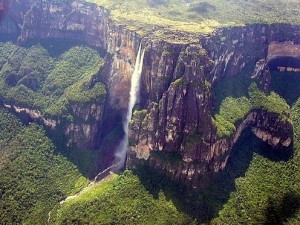 Latin America is incredibly rich in interesting places. 3 of the 7 new wonders of the world are located here. All the sights of Latin America can be divided into natural and man-made objects, as well as cities and villages of ancient civilizations.
Latin America is incredibly rich in interesting places. 3 of the 7 new wonders of the world are located here. All the sights of Latin America can be divided into natural and man-made objects, as well as cities and villages of ancient civilizations.
Natural attractions:
- Ojos del Salado is the highest volcano on Earth (6887 m).
- The Atacama Desert is the driest place on the planet, located in the west of South America.
- The Andes are the longest mountain system in the world (9000 km).
- Angel is the highest waterfall in the world (979 m).
- The Amazon is the longest and most picturesque river on the planet (6437 km).
- Tierra del Fuego in Argentina is the largest South American island with an area of 47,992 sq. km. It is a virgin land renowned for its wildlife, beautiful landscapes and harsh climates.
- Iguazu Falls, located on the border of Argentina and Brazil. They represent one of the most beautiful natural wonders on our planet.
Man-made sights:
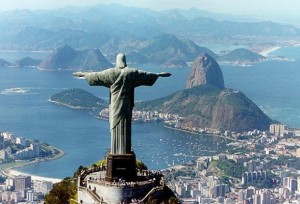
Cities and villages of ancient civilizations:
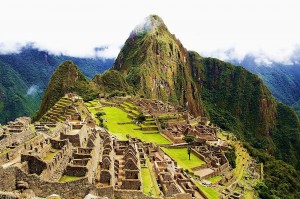
Latin American length unit
The units of length used today in Latin America can be represented as follows:
- Brasa- the unit of length used in Brazil (1 unit = 2.2 m) and Argentina (1.73 m).
- Pie- a unit of length used in El Salvador (1 unit of length = 27.8 cm), Haiti (30.5 cm), Honduras (27.83 cm), Cuba (30 cm), Mexico (27.93 cm) , Argentina (28.9 cm), Chile (30.5 cm), Uruguay (28.6 cm) and Paraguay (28.9 cm).
- Vara- unit of length used in Peru (1 unit = 83.6 cm), Dominican Republic (83.6 cm), Brazil (1.11 m), Venezuela (80 cm), Guatemala (83.58 cm) , Honduras (83.5 cm), Colombia (20 cm), Costa Rica (83.6 cm), Mexico (83.8 cm), Panama (80 cm), Paraguay (86.7 cm), El Salvador (83 , 5 cm), Uruguay (85.9 cm), Chile (83.5 cm), Ecuador (84 cm), Cuba (84.8 cm) and Argentina (86.7 cm).
- Legua- a unit of length used in Guatemala (1 unit = 5.573 km), Honduras (4.2 km), Colombia (5 km), Cuba (4.24 km), Ecuador (5 km), Paraguay (4, 33 km), Peru (5.6 km), Uruguay (5.154 km), Chile (4.514 km), Brazil (6.66 km), Mexico (4.19 km) and Argentina (5.2 km).
Latin
A collective term for countries that speak Romance languages (Portuguese and Spanish), descended from Latin, in fact, hence the name. Latin America is often associated with Catholicism, Roman legal and cultural traditions... Latin America is often called Latin Europe in the West, just as there is Germanic Europe or Slavic Europe. The countries of South America began to be called Latin America in the 19th century, when a very strong influence of Roman Catholicism was discovered here, in this region the contribution of European Romance countries was most visible in terms of culture, language, religion, as well as at the genetic level. Most Hispanics are of Latin European descent, particularly from Italy, Spain, France and Portugal. North America, in contrast, is called Anglo-Saxon America, but the Americans themselves and the inhabitants of Latin America are called just Americans, Canada is simply Canada, and the inhabitants are Canadians.
Population of Latin America
Today the population of Latin America is estimated at more than 610 million people.
Ethnic groups
Latin America is the most diverse region in the world in terms of the presence of ethnic groups and races, ethnic composition varies from country to country, the majority of the population of Latin America is mestizo, the descendants of marriages between Europeans and local Indians. In most countries, the Indian population predominates, in some countries it is white, there are countries where the majority of the population is black or mulatto. Nevertheless, about 80% of the population of Latin America has European roots.
Latin American countries
In addition to the Spanish and Portuguese-speaking countries of mainland America, the list of Latin American countries also includes the countries of the Caribbean region: Puerto Rico, the Dominican Republic, Cuba. Often, countries in which French are spoken are also included in the countries of Latin America, the former and current colonies of France are French Guiana, Saint-Martin, Haiti, with the exception of Quebec, which is located in Canada.
Many countries in Latin America belong to North America, so the concepts of South America and Latin should not be confused. North America includes Mexico, most of the countries of Central and South America, the Caribbean, Cuba, the Dominican Republic, and Puerto Rico.
Countries where the majority of the population speaks English is traditionally not included in Latin America - Guyana, Belize, Bahamas, Barbados, Jamaica and others.
Latin America is picturesque and whimsical, despite its unfavorable for the white man climatic conditions is a popular tourist destination, there is the world's highest Angel Falls, the largest mountain lake Titicaca and the largest functioning volcano Cotopaxi, the longest Andes mountain system on Earth, greatest river Amazon. There are many natural resources here, many countries live off the sale of oil and gas.
Languages in Latin America
Most Latin American countries are Hispanic, Portuguese is spoken largest country in the region - Brazil. In Suriname they speak Dutch, French in Guiana, English in Guyana, Belize, Bahamas, Barbados, Jamaica.
60% of the population of Latin America considers Spanish as their first language, 34% Portuguese, 6% of the population speak other languages such as Quechua, Maya, Guarani, Aymara, Nahuatl, English, French, Dutch and Italian. Portuguese is only spoken in Brazil (Brazilian Portuguese), the largest and most populous country in the region. Spanish is the official language of most of the rest of Latin America, as well as Cuba, Puerto Rico (where it is equal to English), and the Dominican Republic. French is spoken in Haiti and French overseas departments in Guadeloupe, Martinique, Guiana, the French overseas community of Saint Pierre and Miquelon, and French is also spoken in Panama. Dutch is official language in Suriname, Aruba and the Netherlands Antilles. Dutch is related to Germanic, so these territories are not necessarily considered to be part of Latin America.
Indian languages: Quechua, Guarani, Aymara, Nahuatl, Mayan lenguas, Mapu Dungun are widely spoken in Peru, Guatemala, Bolivia, Paraguay and Mexico, to a lesser extent in Panama, Ecuador, Brazil, Colombia, Venezuela, Argentina and Chile. In Latin American countries not listed above, the population of native speakers is generally negligible or absent, for example in Uruguay. Mexico is the only country that boasts a wider variety of indigenous languages than any other Latin American country, with Nahuatl being the most spoken Native American language in Mexico.
In Peru, the Quechua is the official language, along with Spanish and any other language of the other indigenous peoples of the country where they are predominant. There is no official language in Ecuador, and Quechua is the recognized language of the indigenous people under the country's constitution, but Quechua is spoken by only a few groups in the highlands. In Bolivia, the Aymara, Quechua and Guarani Indian languages have official status along with Spanish. Guarani, along with Spanish, is the official language of Paraguay, where the majority of the population is bilingual; in the Argentine province of Corrientes, only Spanish is official. In Nicaragua, Spanish is the official language, but on the country's Caribbean coast the official languages are English and indigenous languages such as Miskito, Sumo and Rama.
Colombia recognizes all indigenous languages spoken locals however, only 1% of the country's population are native speakers of these languages. Nahuatl is one of 62 native languages of indigenous people in Mexico, which are officially recognized by the government as "national languages" along with Spanish.
Other European languages that are spoken in Latin America are English, spoken by some groups in Puerto Rico as well as in neighboring countries which are not considered to be Latin America are Belize and Guyana.
German is common in southern Brazil, southern Chile, parts of Argentina, Venezuela, and Paraguay.
Italian is spoken in Brazil, Argentina, Venezuela, and Uruguay.
Ukrainian and Polish in southern Brazil, southern Argentina.
Yiddish and Hebrew are common in the vicinity of Buenos Aires and São Paulo.
Japanese is common in Brazil and Peru, Korean in Brazil, Arabic in Argentina, Brazil, Colombia and Venezuela, Chinese throughout South America.
V The Caribbean The Creole language is widespread, including Haitian Creole, which is the predominant language of Haiti, this is primarily due to the confusion of French with West African languages, Native American, with influences from English, Portuguese and Spanish.
The Garifuna language is spoken along the Caribbean coast in Honduras, Guatemala, Nicaragua and Belize.
Latin American countries
The largest country in Latin America in terms of area is Brazil with an area of 8,515,767 square kilometers, then Argentina 2,780,400, Mexico 1,972,550, Peru 1,285,216, Colombia 1,141,748, the smallest region is the French overseas territory of Saint Martin with an area of 25 square kilometers.
If you look at the population, then again the largest state is Brazil 201032714 people, then Mexico 118395054, Colombia 47387109 and only in fourth place is Argentina 41660417.
Cities in Latin America
The largest proud in Latin America is the Mexican capital Mexico City 20631353 people, then Sao Paulo Brazil 19953698, Buenos Aires Argentina 13333912, Rio de Janeiro Brazil 11968886, Lima Peru 10231678, Bogota Colombia 8868395, Santiago Chile 7023767, Belo Horizonte Brazil 5504729, Caracas Venezuela 5297026, Guadalajara Mexico 4593444.
Richest city in Latin America Buenos Aires with GDP per capita USD 26 129, further Caracas 24 000, Sao Paulo 23 704, Santiago 21393, Mexico City 19 940, Lima 17 340, Belo Horizonte 17 239, Guadalajara 16 855, Rio de Janeiro 16 282, Bogotá 15 891.
Religion in Latin America
90% of Hispanics are Christians, 70% of Hispanics consider themselves to be Latin Catholics. As we have noticed, Catholicism prevails in Latin America, in contrast to the Protestant North America with the USA and Canada.
Hispanics and migration
For example, about 10 million Mexicans live in the United States today, 29 million Americans today boast Mexican roots. 3.33 million Colombians live outside of their homeland today, while outside Brazil there are 2 million natives of this country. One and a half million Salvadorans live in the United States, and there are still so many de Dominicans, 1.3 million Cubans.
0.8 million Chileans live in Argentina, USA, Canada, Sweden and Australia.
Education, schools and literacy in Latin America
In Latin America today, there are major problems with access to education, however last years the situation has improved, most of the children are already attending school. Children who live in remote regions, as well as children of black families who may live in extreme poverty, do not have access to education. Only 75% of the poorest youth aged 13 to 17 attend school. Currently, more than half of low-income or rural children are unable to complete nine years of secondary school.
Crime and violence in Latin America
Latin America is synonymous with crime. Latin America and Caribbean are the most dangerous regions in terms of crime modern world, it is in Latin America that the most dangerous cities in the world are located, which can be justified by the highest level of social inequality in the income of the population. The problem with crime will not be solved until the social gap between rich and poor is smoothed. Therefore, crime prevention, an increase in the number of police and prisons will lead nowhere. The homicide rate in Latin America is the highest in the world. From the early 1980s to the mid-1990s, the homicide rate increased 50 percent. The main victims of such murders are young people, 69% of whom are between the ages of 15 and 19.
The most dangerous countries in Latin America
The most dangerous countries in Latin America are: Honduras 91.6 murders per 100,000 inhabitants, El Salvador 69.2, Venezuela 45.1, Belize 41.4, Guatemala 38.5, Puerto Rico 26.2, Dominican Republic 25, Mexico 23.7 and Ecuador 18.2.
For example, the world average is 6.9. In 1995, Colombia and El Salvador broke the world record for the crime rate - 139.1 murders per 100,000 inhabitants. Crime and violence in Latin America is the main threat to human health and takes more lives than AIDS or other infectious diseases.
Latin America Economy
nominal GDP of US $ 5,573,397 million. Human Development Index (HDI) in Latin America
All Latin American countries are classified as emerging economies. If we evaluate the countries of the region according to the Human Development Index (HDI), then the leader here is Chile with a coefficient of 0.819, followed by Argentina 0.811, Uruguay 0.792, Panama 0.780, Mexico 0.775, Costa Rica 0.773, Peru 0.741, Colombia 0.719, Dominican Republic 0.702, Bolivia 0.675, Paraguay 0.669, Guatemala 0.628, Honduras 0.617, Nicaragua 0.599, Haiti is an outsider of 0.456.
Poverty in Latin America
The poorest and richest countries in Latin America
If we assess countries in terms of poverty, then people feel best in Uruguay where only 3% of the population is below the poverty line, followed by Chile with a coefficient of 3.2, Argentina 3.7, Costa Rica 3.7, Cuba 4.6, Mexico 5.9, Venezuela 6.6, Panama 6.7, Colombia 7.6, Ecuador 7.9, Brazil 8.6, Haiti has the worst at 31.5. For example, 54.9% of the population lives in Haiti on less than $ 1.25 per day, in Guatemala 16.9, Nicaragua 15.8, Honduras 23.3, El Salvador 15.1
Malnutrition affects up to 47% of Haitians, 27% of Nicaraguans, 23% of Bolivians and 22% of Honduras.
Life expectancy in Latin America
Life expectancy is one of the most important indicators of quality of life. So from this point of view, it is best to live in Cuba, Costa Rica and Chile, where the indicator is 79 years. In Mexico and Uruguay 77, in Panama, Ecuador and Argentina 76, the lowest rate in Haiti 62 years.
The best countries in Latin or South America for life
So, the palm is shared by Chile and Uruguay, Chile has the highest human development index, GDP, life expectancy and the lowest crime rate for this region. Uruguay has the lowest income inequality, the lowest poverty, extreme poverty, and the highest peacefulness.
Panama is different the highest level real GDP growth. Cuba boasts educational success with the lowest illiteracy rate local population as well as people living in Cuba for a very long time, Costa Rica also boasts a relatively high life expectancy for its citizens.
Haiti has the worst performance, living in this country is scary. Nevertheless, surprisingly, Haiti has a very low crime rate, despite the extreme poverty of the population, the homicide rate is only 6.9 per 100,000 people per year, approximately the same crime rate in prosperous Uruguay. But it is already very dangerous in Honduras, El Salvador, Venezuela, Guatemala, Colombia, Mexico.
The best country to live in Latin America
Popular countries Argentina and Brazil show average rates for the entire Latin American region. So the most best country for life, from our point of view, these are Chile and Uruguay, followed by Argentina, Costa Rica, Mexico, Venezuela, Panama, Colombia, Ecuador and Brazil. Accidents in Cuba can be misrepresented.
Ecology in Latin America
The highest ecology in Costa Rica, Colombia, Brazil, Ecuador. The lowest in Haiti are Mexico, Peru, Guatemala, Chile and Argentina.
Tourism in Latin America
Among the countries of Latin America, Mexico is doing well in terms of international trism, this is thanks to the close geographic location to the United States and a large number of archaeological sites, it is worth mentioning a resort like Cancun.
Mexico is visited annually by 22.3 million foreign tourists, the next pursuer is very far behind, this is Argentina with an indicator of 5.2 million, followed by Brazil 5.1, Puerto Rico with 3.6, Chile with 2.7, Colombia 2.38, Dominican Republic 4.1, Panama 2.06 ...
Most visited cities and attractions in Latin America
The most visited cities and attractions in Latin America: Cancun, Galapagos Islands, Machu Picchu, Chichen Itza, Cartagena, Cabo San Lucas, Acapulco, Rio de Janeiro, El Salvador, Margarita Island, Sao Paulo, Salar de Uyuni , Punta del Este, Santo Domingo, Labadee, San Juan, Havana, Panama City, Iguazu Falls, Puerto Vallarta, Poas National park volcano, Punta Cana, Viña del Mar, Mexico City, Quito, Bogota, Santa Marta, San Andres, Buenos Aires, Lima, Maceio, Florianopolis, Cuzco, Ponce and Patagonia.
If we talk about the efficiency of tourism in Latin America, then the leader here is the Dominican Republic, where the largest receipts from the tourism sector from the country's GDP, but the receipts from tourism per capita are the highest in Uruguay. Very high income from tourism in Venezuela, but this is also due to the space local prices. A trip to Brazil, Panama, Dominican Republic is considered very expensive.
The most not attractive countries for tourism in Latin America are: Haiti, Paraguay, Venezuela, El Salvador - you can skip these countries on your trip to South America.
Theme: Latin America
Lesson: Composition of Latin America. Political Map
Latin America is the Western Hemisphere region located between the United States and Antarctica. There are several subregions in Latin America. These are Central America (Mexico, the countries of Central America and the West Indies), the Andean countries (Venezuela, Colombia, Ecuador, Peru, Bolivia, Chile), the countries of the La Plata basin (Paraguay, Uruguay, Argentina), Brazil. The name "Latin America" comes from the historically prevailing influence of the language, culture and customs of the Romance (Latin) peoples of the Iberian Peninsula in this part of the world.
The region covers an area of 21 million square meters. km with a population of more than 570 million people.
Rice. 1. Political map of Latin America ()
Latin American countries vary in area: the largest country in the region is Brazil, the smallest are in the basin Caribbean.
Borders between countries run mainly along rivers, ridges and other orographic features.
Economic and geographical position of Latin America:
1. Closeness to the USA.
2. Remoteness from other regions of the world.
3. The presence of the Panama Canal.
4. Almost all countries (except Bolivia and Paraguay) have access to the sea.
According to the form of government, all countries in the region are republics. More than 33 countries are part of Latin America. Some countries are part of the Commonwealth (for example, Guyana, Dominica, Trinidad and Tobago). Guiana belongs to France. Cuba is a socialist state.
In terms of the form of the administrative-territorial structure, prevail unitary states, the following countries have a federal structure: Brazil, Argentina, Mexico, Venezuela, Saint Kitts and Nevis.
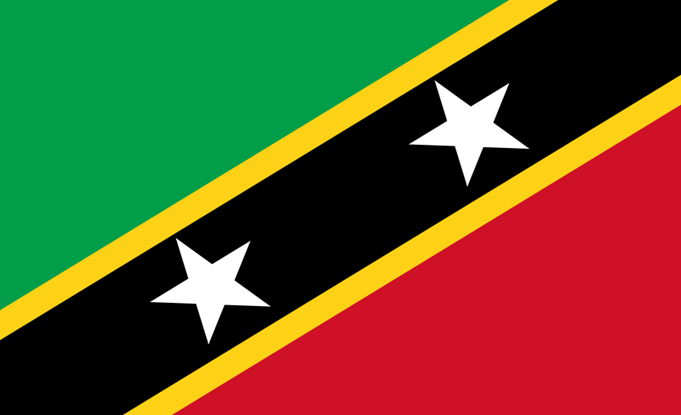
Rice. 2. Flag of Saint Kitts and Nevis ()
Formation stages political map Latin America:
1. Stage of pre-European colonization.
2. Colonial stage.
3. Post-colonial stage.
4. Stage after the Second World War.
The civilizations of the Maya, Aztecs, Incas were located on the territory of Latin America.
The territory of Latin America was mastered mainly by Spain and Portugal.
Puerto Rico has a special status. Puerto Rico is a US-dependent territory and has the status of an "unincorporated organized territory", which means that this territory is under US control (and is not an integral part of it), the effect on the territory of the US Constitution is limited; supreme power belongs to the US Congress, but the territory has its own system of self-government.
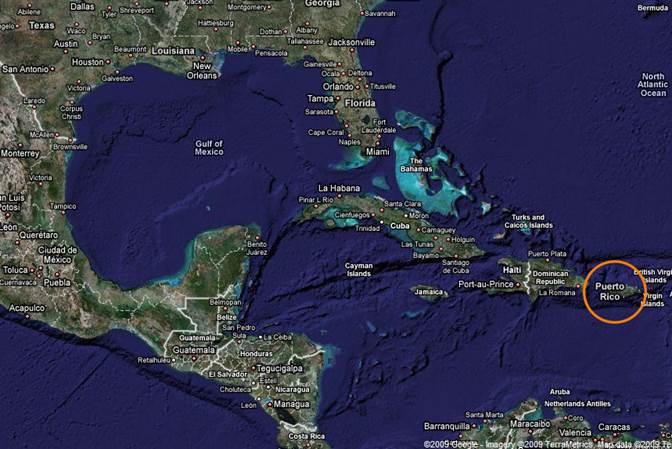
Currently, many issues related to the boundaries and ownership of territories have not been resolved. A prime example is the disputed Falkland Islands (Malvinas) between Britain and Argentina.
Cuba. The official name is the Republic of Cuba, unofficial since 1959 is the Island of Liberty - an island state in the northern part of the Caribbean Sea. The capital is Havana. Cuba is the largest island state in the region, stretching for 1250 km. It is located at the junction of the Caribbean Sea and the Gulf of Mexico, which form the "American Mediterranean". The key depicted on the coat of arms of the country is a symbol that discovered by Columbus in 1492 the island has been its own key to the New World for centuries. Cuba is a socialist state, for a long time it was an ally of the USSR.
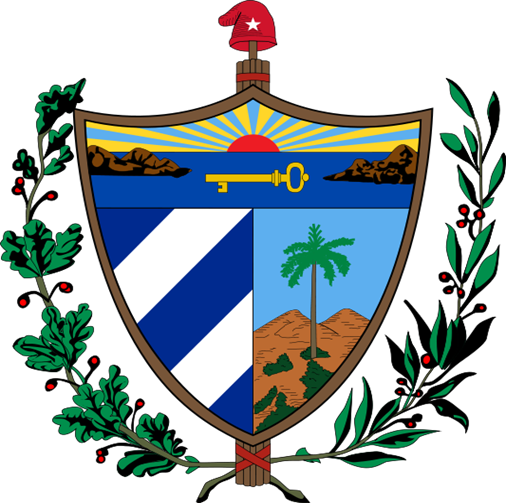
Junta. In many countries, this word denotes various government bodies, including civil. In modern Russian (as in a number of other languages of the world), the word " junta" used mainly to refer to a military dictatorship established as a result of a coup d'état. The Chilean Government Junta is a prime example.
Homework
Topic 10, P. 1
1. What regions (sub-regions) are distinguished in Latin America?
2. Name the features of EGP in Latin America.
Bibliography
The main
1. Geography. A basic level of. 10-11 grades: Textbook for educational institutions / A.P. Kuznetsov, E.V. Kim. - 3rd ed., Stereotype. - M .: Bustard, 2012 .-- 367 p.
2. Economic and social geography of the world: Textbook. for 10 cl. educational institutions / V.P. Maksakovsky. - 13th ed. - M .: Education, JSC "Moscow textbooks", 2005. - 400 p.
3. Atlas with set outline maps for grade 10. Economic and social geography of the world. - Omsk: FSUE "Omsk Cartographic Factory", 2012. - 76 p.
Additional
1. Economic and social geography of Russia: Textbook for universities / Ed. prof. A.T. Khrushchev. - M .: Bustard, 2001 .-- 672 p .: ill., Maps .: color. incl.
Encyclopedias, dictionaries, reference books and statistical compilations
1. Geography: a reference book for high school students and those entering universities. - 2nd ed., Rev. and finished. - M .: AST-PRESS SHKOLA, 2008 .-- 656 p.
Literature for preparing for the State Examination and the Unified State Exam
1. Thematic control in geography. Economic and social geography of the world. Grade 10 / E.M. Ambartsumov. - M .: Intellect-Center, 2009 .-- 80 p.
2. The most complete edition of typical options for real assignments of the Unified State Exam: 2010. Geography / Comp. Yu.A. Solovyov. - M .: Astrel, 2010 .-- 221 p.
3. The optimal bank of tasks for preparing students. Unified State Exam 2012. Geography: Tutorial/ Comp. EM. Ambartsumova, S.E. Dyukov. - M .: Intellect-Center, 2012 .-- 256 p.
4. The most complete edition of typical versions of real USE assignments: 2010. Geography / Comp. Yu.A. Solovyov. - M .: AST: Astrel, 2010 .-- 223 p.
5. Geography. Diagnostic work in the format of the Unified State Examination 2011. - M .: MCNMO, 2011. - 72 p.
6. USE 2010. Geography. Collection of tasks / Yu.A. Solovyov. - M .: Eksmo, 2009 .-- 272 p.
7. Tests in geography: grade 10: to the textbook of V.P. Maksakovsky “Economic and social geography of the world. Grade 10 "/ E.V. Baranchikov. - 2nd ed., Stereotype. - M .: Publishing house "Exam", 2009. - 94 p.
8. Unified State Exam 2009. Geography. Universal materials for training students / FIPI - M .: Intellect-Center, 2009. - 240 p.
9. Geography. Answers on questions. Oral exam, theory and practice / V.P. Bondarev. - M .: Publishing house "Exam", 2003. - 160 p.
10. USE 2010. Geography: thematic training tasks / O.V. Chicherina, Yu.A. Solovyov. - M .: Eksmo, 2009 .-- 144 p.
11. USE 2012. Geography: Typical exam options: 31 options / Ed. V.V. Barabanova. - M .: National education, 2011 .-- 288 p.
12. USE 2011. Geography: Typical exam options: 31 options / Ed. V.V. Barabanova. - M .: National education, 2010 .-- 280 p.
Materials on the Internet
1. Federal Institute for Pedagogical Measurements ( ).
2. Federal portal Russian Education ().

